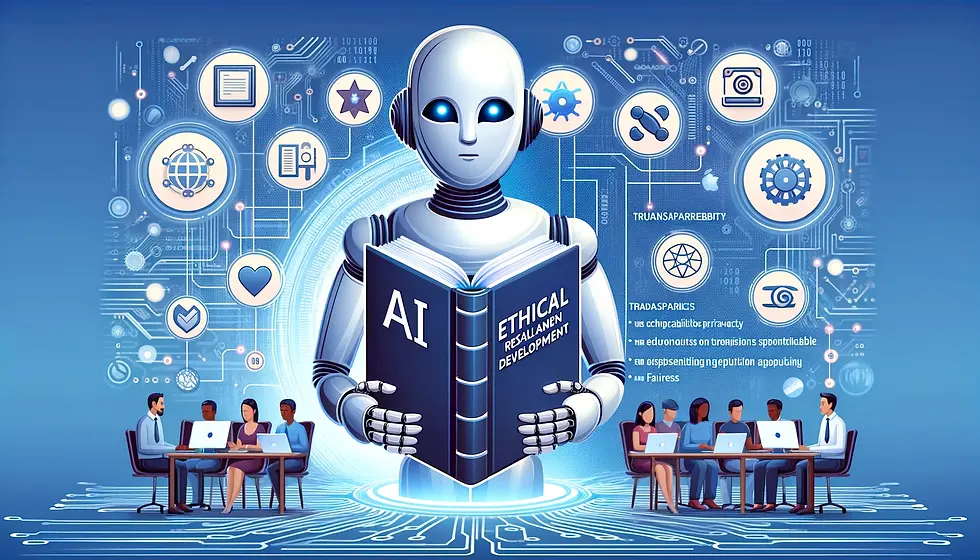Augmented Reality in Education: Revolutionizing Learning Experiences and Outcomes
- ERLOUISE M. VARGAS
- Jun 8, 2024
- 4 min read

Augmented Reality (AR) technology, which overlays digital information on the physical world, is increasingly being integrated into educational settings to create immersive and interactive learning experiences. This innovative approach has the potential to significantly enhance educational outcomes by making learning more engaging, accessible, and effective. In this article, we will explore the various implications of AR in education, highlighting its benefits, challenges, and future potential.
Enhancing Engagement, Understanding, and Retention
One of the primary benefits of AR in education is its ability to captivate students' attention and enhance their engagement with the subject matter. Traditional teaching methods can sometimes fail to stimulate students' interest, leading to disengagement and poor retention. AR can transform mundane lessons into dynamic, interactive experiences, making learning more exciting and enjoyable. For example, a history lesson can be brought to life by overlaying 3D models of ancient artifacts or historical figures, allowing students to interact with them in real-time.
AR's ability to present information in a visually rich and interactive manner can greatly enhance students' understanding and retention of complex concepts. Visual learning aids have long been known to improve comprehension, and AR takes this to a new level by allowing students to visualize abstract concepts and see them in action. In subjects like biology, AR can be used to create 3D models of cells or organs, enabling students to explore their structures and functions in detail, leading to a deeper understanding and longer-lasting retention of the material.
Promoting Active Learning and Collaboration
AR encourages active learning by requiring students to engage with the content actively rather than passively consuming information. This hands-on approach can foster critical thinking and problem-solving skills. Moreover, AR can facilitate collaborative learning by enabling multiple students to interact with the same AR environment simultaneously. This collaborative aspect of AR can help develop teamwork and communication skills, which are essential for success in the modern world.
Bridging the Gap Between Theory and Practice
One of the significant challenges in education is bridging the gap between theoretical knowledge and practical application. AR can address this issue by providing students with virtual simulations that mimic real-world scenarios. For example, medical students can use AR to simulate surgeries or other medical procedures, allowing them to practice and hone their skills in a risk-free environment. This hands-on experience is invaluable in preparing students for real-life situations and enhancing their practical skills.
Improving Accessibility, Inclusivity, and Customization
AR technology has the potential to make education more accessible and inclusive. Students with disabilities can benefit from AR applications designed to cater to their specific needs, such as visual or auditory aids. For instance, AR can provide subtitles for students with hearing impairments or convert text to speech for those with visual impairments. By accommodating diverse learning needs, AR can help create a more inclusive educational environment where all students have the opportunity to succeed.
AR can also support personalized learning by adapting to individual students' needs and learning styles. AR applications can be designed to provide customized feedback and adjust the level of difficulty based on the student's performance. This personalized approach can help address learning gaps and ensure that each student progresses at their own pace, ultimately leading to better learning outcomes.
Overcoming Geographical Barriers
AR can transcend geographical barriers, allowing students to experience places and events they might never have the opportunity to visit in person. Virtual field trips using AR can transport students to historical sites, museums, or even outer space, providing them with rich, immersive experiences that enhance their learning. This capability is particularly valuable in remote or underserved areas where access to educational resources may be limited.
Challenges and Considerations
Despite its many benefits, the integration of AR in education also presents several challenges. One of the primary concerns is the cost of AR technology, which can be prohibitive for some schools and institutions. Ensuring that all students have equal access to AR tools is crucial to prevent widening the digital divide. Additionally, there is a need for teacher training and professional development to effectively incorporate AR into the curriculum. Teachers must be equipped with the necessary skills and knowledge to use AR technology effectively and to design AR-based learning activities that align with educational objectives.
The Future of AR in Education
The future of AR in education is promising, with ongoing advancements in technology and increasing recognition of its potential benefits. As AR technology becomes more affordable and accessible, it is likely to become a standard tool in educational settings. The development of new AR applications tailored to various subjects and educational levels will further enhance its impact. Moreover, as educators and researchers continue to explore the best practices for integrating AR into teaching and learning, we can expect to see more innovative and effective uses of this technology.
Conclusion: Embracing the Potential of AR
In conclusion, AR has the potential to revolutionize education by making learning more engaging, interactive, and effective. Its ability to enhance understanding, promote active learning, and bridge the gap between theory and practice makes it a valuable tool in modern education. While challenges remain, the future of AR in education looks bright, with the promise of creating more inclusive, personalized, and immersive learning experiences. As educators embrace this technology and continue to innovate, the full potential of AR in education will undoubtedly be realized, transforming the way we teach and learn.




Comments